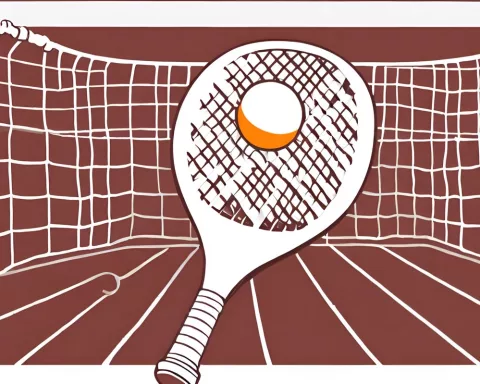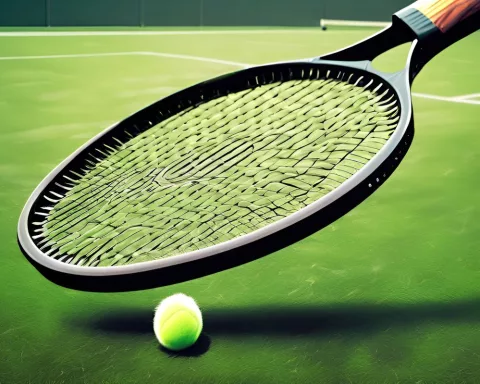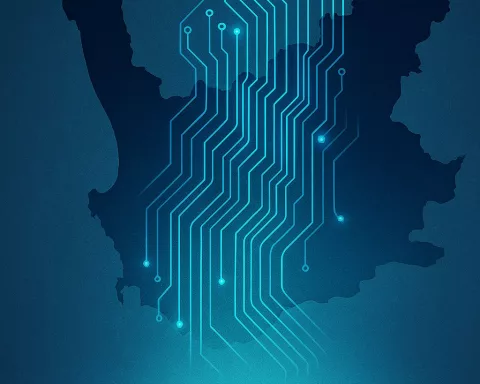Jannik Sinner led Italy to victory against the Netherlands in the Davis Cup quarter-finals, securing a spot in the semi-finals. Sinner, ranked fourth in the world, won his singles match and the decisive doubles match with Lorenzo Sonego. Despite Italy’s Matteo Arnaldi’s narrow loss in his singles match, they prevailed with Sinner’s outstanding performance. Italy now awaits their semi-final opponents, the winners of the Serbia vs. Britain match.
Jannik Sinner secures a spot for Italy in the Davis Cup semi-finals against the Netherlands.
Italy’s rising star, Jannik Sinner, led his team to victory in the Davis Cup quarter-finals against the Netherlands, securing a spot in the semi-finals. Sinner won his singles match and teamed up with Lorenzo Sonego to win the decisive doubles match, defeating the Dutch pairing of Tallon Griekspoor and Wesley Koolhof. Italy’s captain, Filippo Volandri, made a significant decision to play Matteo Arnaldi over the higher-ranked Lorenzo Musetti. Despite Arnaldi’s narrow loss in his singles match, Italy prevailed with Sinner’s outstanding performance.
Unfolding Drama on Clay Courts
In the picturesque clay courts of Malaga, a high-stakes tennis showdown was played out, ultimately guaranteeing Italy a place in the Davis Cup semi-finals for a second year in succession. The star of the day turned out to be Jannik Sinner, a young prodigy ranked fourth in the world, who succeeded in not only his singles game but also played a pivotal role in the decisive doubles match, leading Italy to a 2-1 victory against the Netherlands.
The talented 20-year-old Sinner, who had recently participated in the ATP Finals, demonstrated his skill and expertise on the court, overtaking Tallon Griekspoor with a score of 7-6 (7/3), 6-1. This victory was crucial in balancing the scoreboard following Italy’s Matteo Arnaldi’s narrow loss to Botic van de Zandschulp in an intense, three-set game, which ended 6-7 (6/8), 6-3, 7-6 (9/7).
The Turning Point: Doubles Match
The game’s turning point came with the doubles match where Sinner, paired with Lorenzo Sonego, competed against Griekspoor and Wesley Koolhof. The Italian pair held sway on the court, securing a 6-3, 6-4 victory and paving the way for Italy’s advancement to the semi-finals. This recent success harks back to the golden years of Italian tennis in the late ’90s when Italy consistently reached the Davis Cup semi-finals from 1996 to 1998.
Being aware of the game’s high pressure, Sinner admitted, “We were slightly perceived as underdogs in this decisive doubles match, but it was an immense pleasure for me to play with (Sonego). We have an extraordinary team.”
The Dutch Challenge and Italy’s Rise
The Netherlands, whose last appearance in the final four was back in 2001, began with an initial sprint, winning the first singles rubber thanks to a spirited performance by van de Zandschulp. However, the Dutch supremacy started to wane as the tournament progressed. Historical precedence too was not in their favor, with the Netherlands having lost to Italy on the last seven occasions, spanning over a century.
A significant change in Italy’s lineup was the decision by captain Filippo Volandri to play world number 44 Arnaldi over the higher-ranked Lorenzo Musetti. Although Arnaldi started strong by winning the first set in a tie-break, he stumbled, enabling van de Zandschulp to make a comeback. Despite Arnaldi’s stubborn resistance in the third set, van de Zandschulp prevailed in a second tie-break.
However, Italy’s hope was kept alive thanks to Sinner, who rose to the challenge and engaged in another tie-break with Griekspoor. It was in the second set that Sinner truly exhibited his strengths, breaking twice to gain a significant 5-0 lead. His victory was practically guaranteed as he managed to land 11 winners while committing only two unforced errors in the second set.
Italy’s Journey to Semi-Finals
This Italian dominance continued in the doubles match, with Italy displaying strategic superiority. With a crucial break for a 5-3 lead and an ace from Sinner to secure the first set, Italy was on the path to success. Another key break to move 4-3 ahead, with Griekspoor hitting the net, signaled the imminent victory. The team, led by Volandri, served out the match, cementing Italy’s journey towards the semi-finals.
Now, Italy awaits their semi-final adversaries, the winners of the Serbia vs. Britain match. Meanwhile, the unexpected challengers, Australia and Finland, will compete in the first semi-final on Friday. As the Davis Cup drama continues to unfold in Malaga, Italy’s resurgence, under the leadership of Sinner, adds an intriguing chapter to this worldwide tennis spectacle.
1. Who led Italy to victory in the Davis Cup quarter-finals against the Netherlands?
Jannik Sinner led Italy to victory in the Davis Cup quarter-finals against the Netherlands, securing a spot in the semi-finals.
2. What was the turning point of the game?
The turning point of the game was the doubles match where Jannik Sinner, paired with Lorenzo Sonego, competed against Griekspoor and Wesley Koolhof. The Italian pair held sway on the court, securing a 6-3, 6-4 victory and paving the way for Italy’s advancement to the semi-finals.
3. Who did Italy face in the quarter-finals?
Italy faced the Netherlands in the Davis Cup quarter-finals.
4. Who did Italy’s captain choose to play over the higher-ranked Lorenzo Musetti?
Italy’s captain Filippo Volandri chose to play world number 44 Matteo Arnaldi over the higher-ranked Lorenzo Musetti.
5. Who are Italy’s semi-final opponents?
Italy awaits their semi-final opponents, the winners of the Serbia vs. Britain match.
6. When was the last time Italy consistently reached the Davis Cup semi-finals?
Italy consistently reached the Davis Cup semi-finals from 1996 to 1998.












